-
 Bitcoin
Bitcoin $116700
0.24% -
 Ethereum
Ethereum $3973
4.34% -
 XRP
XRP $3.283
7.68% -
 Tether USDt
Tether USDt $1.000
0.01% -
 BNB
BNB $789.8
2.27% -
 Solana
Solana $176.2
3.31% -
 USDC
USDC $0.9999
0.00% -
 Dogecoin
Dogecoin $0.2238
5.14% -
 TRON
TRON $0.3389
-0.51% -
 Cardano
Cardano $0.7907
4.03% -
 Stellar
Stellar $0.4527
10.02% -
 Hyperliquid
Hyperliquid $41.07
4.27% -
 Sui
Sui $3.794
1.77% -
 Chainlink
Chainlink $19.49
10.40% -
 Bitcoin Cash
Bitcoin Cash $580.9
0.74% -
 Hedera
Hedera $0.2617
4.32% -
 Avalanche
Avalanche $23.41
3.67% -
 Ethena USDe
Ethena USDe $1.001
-0.03% -
 Litecoin
Litecoin $122.4
1.38% -
 Toncoin
Toncoin $3.364
1.49% -
 UNUS SED LEO
UNUS SED LEO $8.988
0.37% -
 Shiba Inu
Shiba Inu $0.00001295
2.82% -
 Uniswap
Uniswap $10.62
5.75% -
 Polkadot
Polkadot $3.922
4.46% -
 Dai
Dai $1.000
0.01% -
 Bitget Token
Bitget Token $4.494
2.15% -
 Monero
Monero $268.0
-1.30% -
 Cronos
Cronos $0.1523
3.68% -
 Pepe
Pepe $0.00001127
4.43% -
 Aave
Aave $285.4
4.85%
Is DeFi safe?
DeFi platforms offer potential benefits such as lower fees and improved transparency, but also conllevate risks including smart contract, market, and operational vulnerabilities.
Oct 09, 2024 at 11:00 am
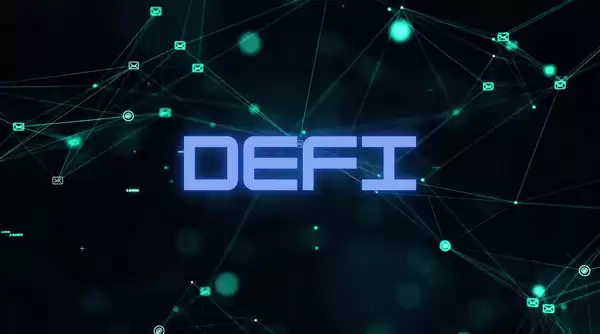
Is DeFi Safe?
Decentralized finance (DeFi) is a rapidly growing sector of the cryptocurrency industry that allows users to lend, borrow, and trade digital assets without the need for a centralized intermediary. While DeFi offers a number of potential benefits, including lower fees, greater transparency, and more flexibility, it also comes with some risks.
1. Smart contract risk
Smart contracts are the backbone of DeFi. They are self-executing contracts that are stored on the blockchain. While smart contracts can be very efficient, they can also be complex and difficult to understand. This can lead to errors that could result in the loss of funds.
2. Market risk
The DeFi market is still relatively young and volatile. This means that the value of digital assets can fluctuate significantly, which could lead to losses for investors.
3. Counterparty risk
When you use a DeFi platform, you are essentially entering into a contract with a counterparty. This counterparty could be a lender, a borrower, or a trading partner. If the counterparty defaults on their obligations, you could lose your funds.
4. Operational risk
DeFi platforms are still in their early stages of development and could be subject to operational risks, such as hacking, fraud, and technical glitches.
So, is DeFi safe?
The answer to this question depends on a number of factors, including the platform you are using, the assets you are investing in, and your own risk tolerance. If you are considering using DeFi, it is important to do your research and understand the risks involved.
Here are some tips for staying safe when using DeFi:
- Use a reputable platform. There are a number of DeFi platforms available, so it is important to do your research and choose one that is reputable and has a good track record.
- Only invest in assets that you understand. Before you invest in any digital asset, it is important to understand the risks involved.
- Be aware of the counterparty risk. When you use a DeFi platform, you are entering into a contract with a counterparty. It is important to understand the risks involved with the counterparty before you enter into a contract.
- Store your digital assets securely. When you store your digital assets on a DeFi platform, they are not technically in your control. It is important to store your digital assets in a secure wallet, such as a hardware wallet.
- Be aware of the operational risks. DeFi platforms are still in their early stages of development and could be subject to operational risks, such as hacking, fraud, and technical glitches. It is important to be aware of these risks before you use a DeFi platform.
Disclaimer:info@kdj.com
The information provided is not trading advice. kdj.com does not assume any responsibility for any investments made based on the information provided in this article. Cryptocurrencies are highly volatile and it is highly recommended that you invest with caution after thorough research!
If you believe that the content used on this website infringes your copyright, please contact us immediately (info@kdj.com) and we will delete it promptly.
- Navigating the Crypto Market in 2025: Smart Decisions for the Meme Supercycle
- 2025-08-09 08:50:12
- DeFi, Tokenized Stocks, and NFTs: A Wild Ride in the Crypto Cosmos
- 2025-08-09 08:30:11
- AERO Price Skyrockets: Aerodrome Finance Sees Massive Surge Amid Coinbase Buzz
- 2025-08-09 08:55:19
- Coinbase, Cosmos, and dYdX: Navigating the Crypto Currents
- 2025-08-09 06:30:16
- BNB Price, Altcoins, and Predictions: What's the Buzz?
- 2025-08-09 06:30:16
- Crypto Presale Projects Primed for Gains in 2025: A New Yorker's Take
- 2025-08-09 06:50:15
Related knowledge
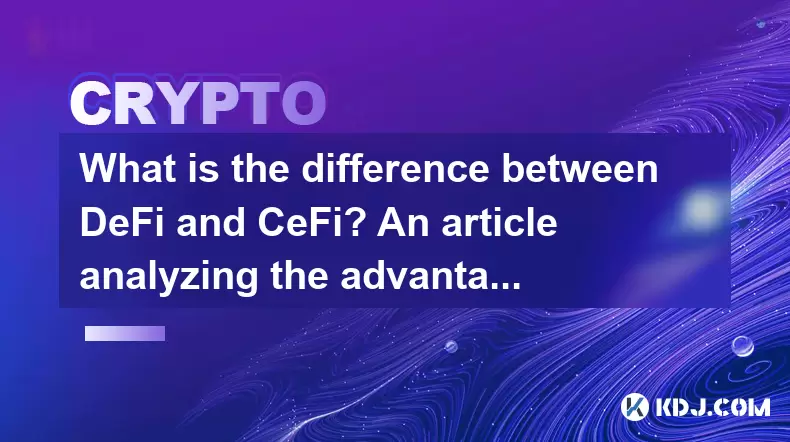
What is the difference between DeFi and CeFi? An article analyzing the advantages and disadvantages of both
Jun 13,2025 at 03:57am
Understanding the Foundations of DeFi and CeFiTo fully grasp the difference between DeFi (Decentralized Finance) and CeFi (Centralized Finance), it’s ...
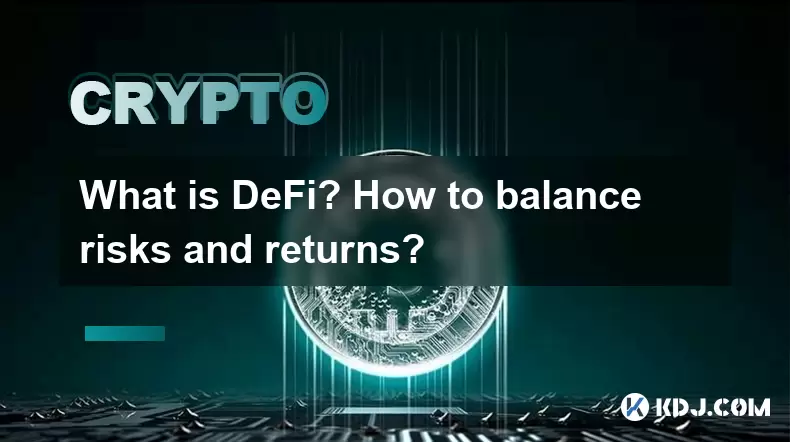
What is DeFi? How to balance risks and returns?
May 31,2025 at 12:22pm
What is DeFi? How to Balance Risks and Returns? Decentralized Finance, commonly known as DeFi, represents a revolutionary shift in the financial ecosy...
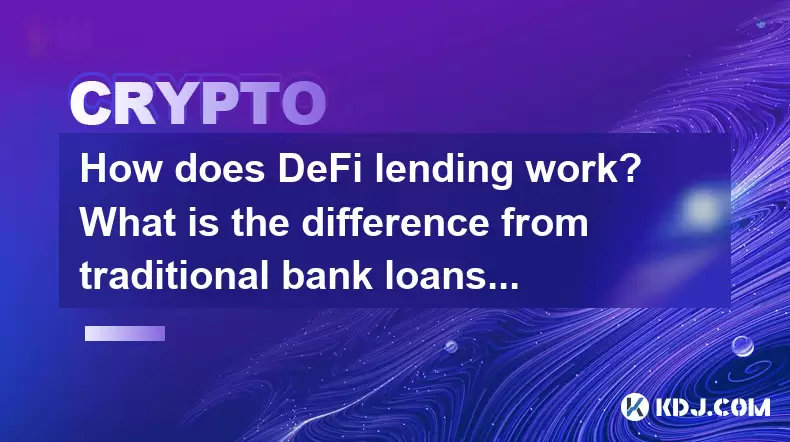
How does DeFi lending work? What is the difference from traditional bank loans?
May 29,2025 at 05:36pm
Introduction to DeFi LendingDeFi lending, or decentralized finance lending, represents a revolutionary shift in the way borrowing and lending are cond...
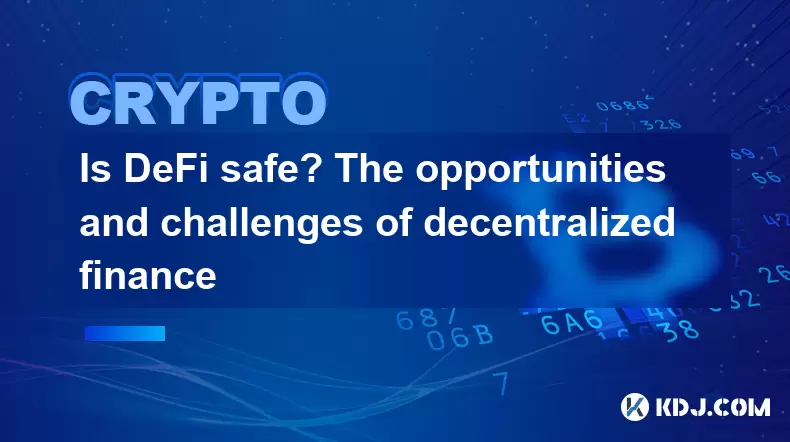
Is DeFi safe? The opportunities and challenges of decentralized finance
May 27,2025 at 02:28pm
Decentralized Finance, commonly known as DeFi, has revolutionized the financial landscape by offering a range of financial services without the need f...
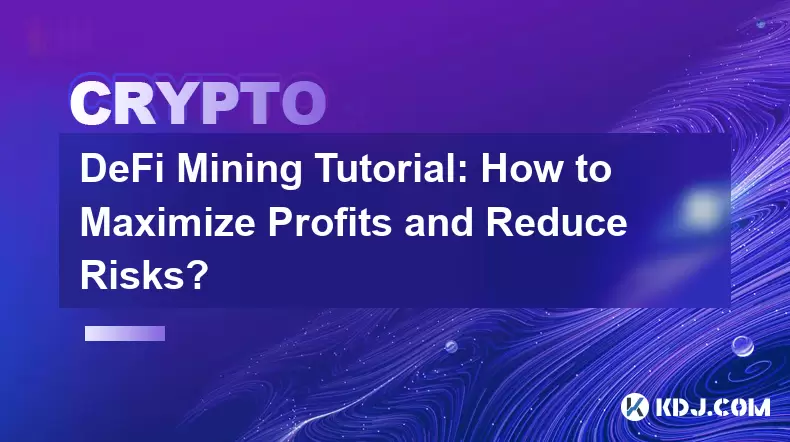
DeFi Mining Tutorial: How to Maximize Profits and Reduce Risks?
May 27,2025 at 07:42am
DeFi, or Decentralized Finance, has opened up a new world of opportunities for crypto enthusiasts looking to maximize their profits through various mi...
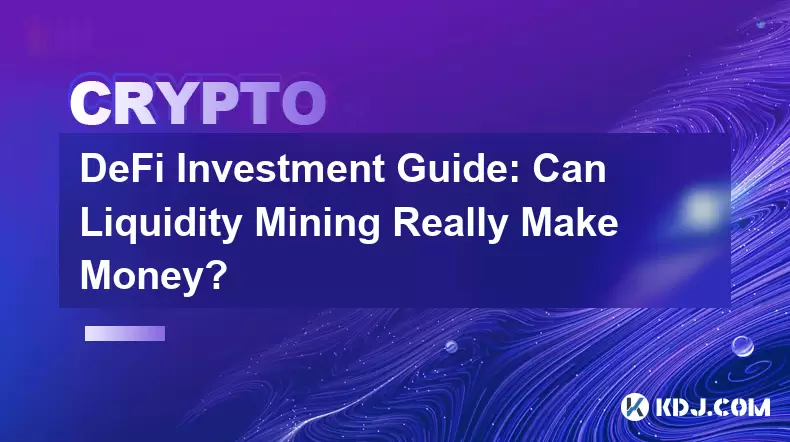
DeFi Investment Guide: Can Liquidity Mining Really Make Money?
May 28,2025 at 10:18am
Introduction to Liquidity Mining in DeFiLiquidity mining has emerged as a popular method for earning passive income within the decentralized finance (...

What is the difference between DeFi and CeFi? An article analyzing the advantages and disadvantages of both
Jun 13,2025 at 03:57am
Understanding the Foundations of DeFi and CeFiTo fully grasp the difference between DeFi (Decentralized Finance) and CeFi (Centralized Finance), it’s ...

What is DeFi? How to balance risks and returns?
May 31,2025 at 12:22pm
What is DeFi? How to Balance Risks and Returns? Decentralized Finance, commonly known as DeFi, represents a revolutionary shift in the financial ecosy...

How does DeFi lending work? What is the difference from traditional bank loans?
May 29,2025 at 05:36pm
Introduction to DeFi LendingDeFi lending, or decentralized finance lending, represents a revolutionary shift in the way borrowing and lending are cond...

Is DeFi safe? The opportunities and challenges of decentralized finance
May 27,2025 at 02:28pm
Decentralized Finance, commonly known as DeFi, has revolutionized the financial landscape by offering a range of financial services without the need f...

DeFi Mining Tutorial: How to Maximize Profits and Reduce Risks?
May 27,2025 at 07:42am
DeFi, or Decentralized Finance, has opened up a new world of opportunities for crypto enthusiasts looking to maximize their profits through various mi...

DeFi Investment Guide: Can Liquidity Mining Really Make Money?
May 28,2025 at 10:18am
Introduction to Liquidity Mining in DeFiLiquidity mining has emerged as a popular method for earning passive income within the decentralized finance (...
See all articles

























































































